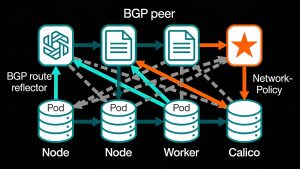Oracle has announced a significant expansion of its partnership with Nvidia, introducing new GPU options and AI infrastructure services on Oracle Cloud Infrastructure (OCI). This move reflects the maturing artificial intelligence market and aims to provide greater flexibility for businesses of all sizes seeking to leverage AI capabilities.
New GPU Options
The centerpiece of Oracle’s announcement is the addition of Nvidia L40S GPUs to OCI’s compute offerings, along with new virtual machine options for Nvidia H100 Tensor Core GPUs. These additions expand OCI’s Nvidia GPU lineup, catering to a wide range of AI computing needs from entry-level to high-performance options.
L40S GPU: A Versatile AI Accelerator
The L40S GPU instances are positioned as versatile options for various AI workloads, including:
- Inference
- Training of smaller models
- Graphics-intensive applications (e.g., digital twins)
Dave Salvator, director of accelerated computing products at Nvidia, described the L40S GPU as a “universal AI accelerator” capable of handling traditional AI tasks, with a focus on inference and the ability to train small models. It also offers visual capabilities for 3D rendering and video processing.
Deployment Flexibility
Oracle is offering these new GPU options in both bare metal and virtual machine configurations, providing customers with more choices in deploying AI workloads. Leo Leung, VP of OCI and Oracle Tech, emphasized the importance of bare metal offerings, stating, “With bare metal, there’s no debate. You’re going to get all the resource available for the customer. And that’s critical for that first stage of AI, where people want the maximum performance.”
OCI Supercluster: Supporting Massive AI Models
Oracle has also updated its “OCI Supercluster” service, which now supports up to 65,000 NVIDIA GPUs. This massive scale is designed for organizations training the largest AI models with hundreds of billions of parameters.Salvator highlighted the importance of scale, noting, “Scale really matters. That’s a combination of compute, as well as really capable networking. The faster you can get deployed, the faster you can get to inferencing and putting your application out there and begin getting value from it.”
Strategic Implications
Industry analysts view this expansion as a strategic move by Oracle to compete more aggressively in the AI cloud market, which is currently dominated by Amazon Web Services, Microsoft Azure, and Google Cloud. By leveraging its partnership with Nvidia, Oracle is positioning itself as a serious contender for enterprises looking to deploy large-scale AI workloads.The partnership also benefits Nvidia by providing another major cloud platform to showcase its latest GPU technologies and expand its reach in the enterprise market.
Expanding AI Access Across Business Sizes
As AI continues to transform industries, the competition among cloud providers to offer the most powerful and flexible AI infrastructure is intensifying. Oracle’s latest offerings demonstrate its commitment to staying competitive in this rapidly evolving landscape.
For businesses, these new options present opportunities to right-size their AI infrastructure investments, potentially lowering barriers to entry for smaller organizations while providing the necessary scale for the most demanding AI workloads.
Leung summarized Oracle’s approach, stating, “As a cloud provider, from our perspective, we want to serve all those types of customers,” from tech giants hosting massive models to small engineering teams working on specialized applications.
With this announcement, Oracle has made a clear statement about its AI ambitions, setting the stage for increased competition in the cloud AI market and providing businesses of all sizes with more options for leveraging AI technologies.



